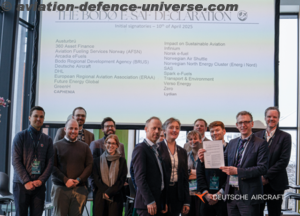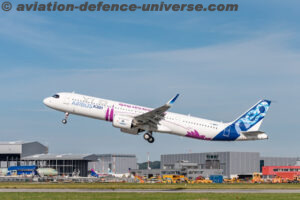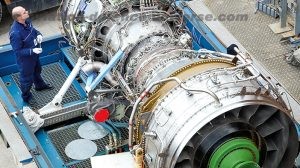
By Sangeeta Saxena
New Delhi. 21 October 2021. When the largest warship ever built for the Royal Navy , left Rosyth dockyard in Scotland it was a moment of pride for the engine maker Rolls Royce. It’s two MT30 marine gas turbines, which work with four diesel generators to supply the ship’s high voltage electrical power – a total requirement of 109 megawatts, were made by Rolls Royce and so were the adjustable bolted propellers and shaft lines, steering gear and rudders, retractable stabilisers and the complete low voltage electrical distribution system. In short Rolls Royce powered the ship to sail in the seas , ready to brave the waters mostly silent and deep and at times turbulent.
And the moment of pride gets extended to October 2021 when UK’s Carrier Strike Group led by HMS Queen Elizabeth docks in the waters of the Arabian Sea and invites team Rolls Royce India aboard giving them an opportunity to showcase to Indian Navy its capabilities to design, build and deliver customised power and propulsion solutions for India’s naval modernisation requirements. The officials on board also expressed their keenness to explore opportunities for partnering the Navy with end-to-end solutions for electrification of India’s future warships.
The Queen Elizabeth class ships, are being delivered by the Aircraft Carrier Alliance (ACA), a single integrated team formed of Babcock, BAE Systems, Thales UK and the MoD. Rolls-Royce is part of the Power & Propulsion ‘sub-alliance’ team comprising Thales, GE Power Conversion and L-3 which has overall responsibility for delivery of the entire power and propulsion system.
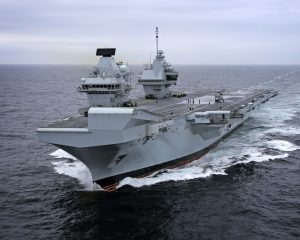
The UK Carrier Strike Group is on a mission to visit more than 1/5th of the world’s nations. Led by HMS Queen Elizabeth, it is visiting 40 nations including India, Japan, Republic of Korea & Singapore in a deployment covering 26,000 nautical miles. The UK’s Carrier Strike Group led by flagship HMS Queen Elizabeth has returned to India. The carrier met up with the Indian Navy in July, for 3 days of complex maritime interactions.
Kishore Jayaraman, President – India and South Asia, Rolls-Royce said, “As India envisions the fleet of the future, our commitment to support the country’s defence modernisation and self-reliance goals remains as strong as ever. The Carrier Strike Group tour is a significant opportunity for Rolls-Royce to showcase the results of decades of innovation in naval power and propulsion. Our experience of supporting the electrification of the Royal Navy’s warships over many years is of particular significance, including the design and deployment of the world’s first hybrid-electric naval system. We believe that we can bring great learnings and value to any future programme envisioned by the Indian Navy for developing electric warships.”
HMS Queen Elizabeth and sister ship HMS Prince of Wales, both feature an extensive range of Rolls-Royce technology. They are each be powered by a pair of MT30 gas turbines, the most powerful in service marine gas turbine. Each ship is being powered through the water by a pair of nickel aluminium bronze propellers, measuring almost seven metres in diameter and weighing 33 tonnes. Each propeller delivers around 50,000 horse-power – the highest power Kamewa propeller ever developed by Rolls-Royce. The stabilising fins are retractable and can be extended from their housing in the ship’s hull to stabilise the vessel when sailing through rough seas.
Once deployed, stabilisers pivot to counteract the roll of the sea and lift the vessel in a concept similar to that of an aircraft’s wing. Stabilisers perform an essential role in steadying a ship during various operations such as the use of weaponry, refuelling or during the take-off and landing of aircraft. The Rolls-Royce scope of supply also includes the low voltage electrical power distribution system, comprising more than 400 individual switchboards, the steering gear that controls the ship’s rudders, and an innovative system for handling cargo transferred in ship-to-ship replenishment operations.
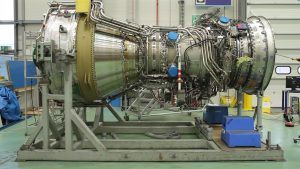
Abhishek Singh, Senior Vice President – Defence, India and South East Asia, Rolls-Royce said, “The HMS Queen Elizabeth visiting India is one of the finest examples of technological excellence in naval warfare. We are looking forward to familiarising our Indian customers with Rolls-Royce’s capabilities aboard this majestic warship and to explore areas for collaboration to further strengthen the might and range of the Indian Navy.”
The ships’ extensive low voltage (LV) electrical system provides power to the mission systems, the auxiliary systems and all domestic services. The project was the biggest undertaken by Rolls-Royce, with over 2,500km of cabling on each vessel. For each vessel, Rolls-Royce has supplied over 650 items of electrical equipment, ranging from switchboards and electrical distribution centres, to starter boards and motor starters.
The MT30 is the world’s most powerful marine gas turbine in service today, each delivering around 50,000 horse power to propel the 65,000-tonne ship. The start-up of the gas turbines, also known as the ‘light-off’, marks a significant part of the commissioning programme for the ship.
The MT30 has been selected to power the most modern and advanced vessels in the Royal Navy including the Queen Elizabeth Class aircraft carriers as well as future Type 26 Global Combat Ship. The MT30 has also been chosen by the US Navy, to power the Freedom Class Littoral Combat Ship and the Zumwalt class multi-mission destroyers as well as the Republic of Korea Navy’s FFX Batch II frigate.
Richard Partridge, Chief of Naval Systems, Rolls-Royce added, “Rolls-Royce is well-positioned to partner India for the modernisation of its naval fleet with the right mix of products, experience and capabilities to design, build, deliver and support customised naval systems and solutions. Our technologically superior offerings and expertise provide the ideal solutions for developing integrated hybrid-electric and full-electric propulsion for naval vessels, including the integration of the MT30 that brings the most power dense gas turbine to these next generation warships.”
The MT30 itself delivers big design benefits through its power density, this helps in reducing significantly the number of gas turbines required to power advanced naval platforms. It also guarantees its power throughout the 50-year service life expectancy of the ship.
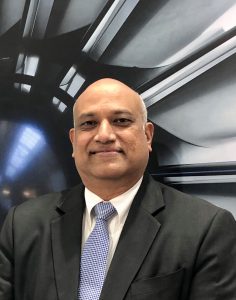
Kishore Jayraman reiterated that Rolls Royce is committed to extending its partnership with the Indian Navy meet their power needs with future-ready technologically advanced offerings. As India grows to take on an increasingly important role on regional and global levels, it is imperative that the Indian Navy equips itself to play a greater role in leading regional maritime security. Choosing the right propulsion system is a crucial decision, as it has to ensure a ship will still perform optimally even as its systems and capability are upgraded throughout its life.
He feels that as India envisions the fleet of the future, Rolls Royce is committed to support the country’s defence modernisation and self-reliance goals by co-development of electric propulsion between UK & India with the atmanirbhar perspective.
As electrical power system integrators, Rolls-Royce provides solutions for both hybrid and all-electric naval vessels, optimising performance to satisfy electrical load demands of the future such as advanced sensor, propulsion and combat systems. It is also an experienced provider of low voltage (LV) electrical power distribution systems for a range of warship and submarine applications. The British engine maker’s experience of supporting the electrification of the Royal Navy’s warships over many years is of particular significance, including the design and deployment of the world’s first hybrid-electric naval system. Indian Navy in it’s expansion mode is just the right target to tap.






































